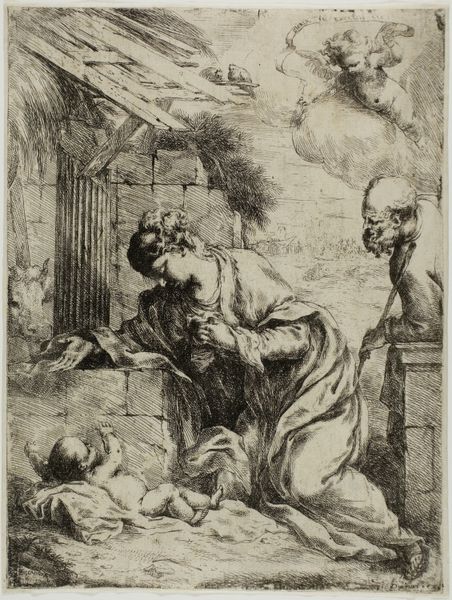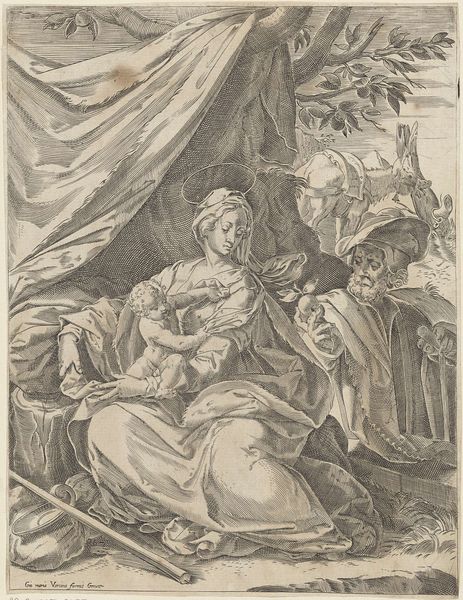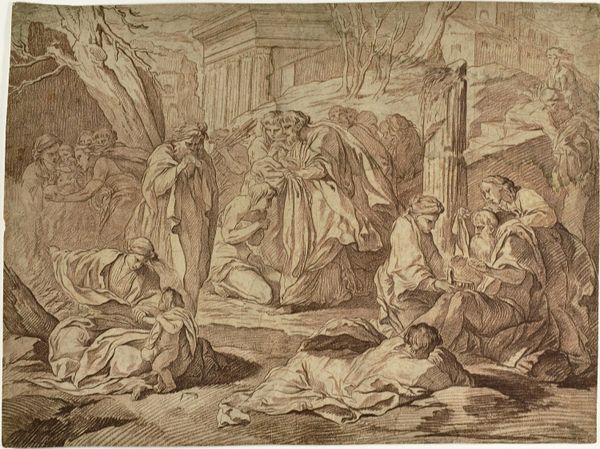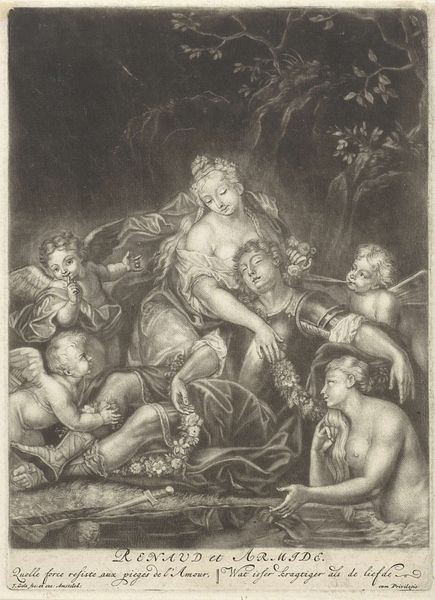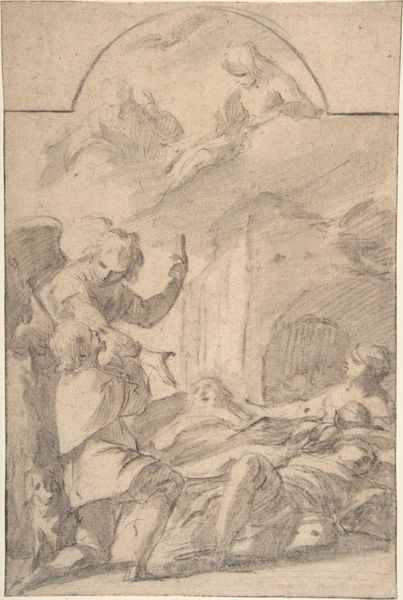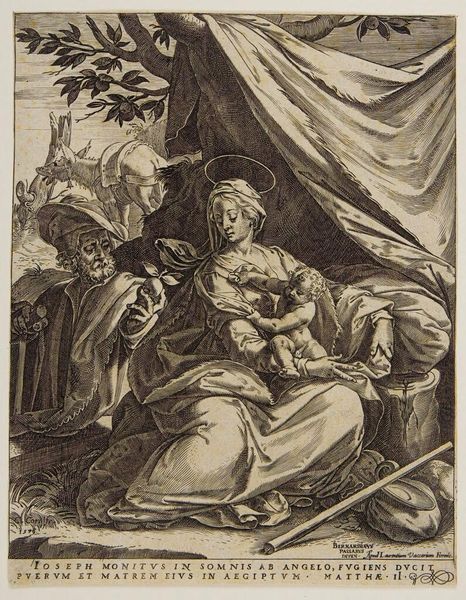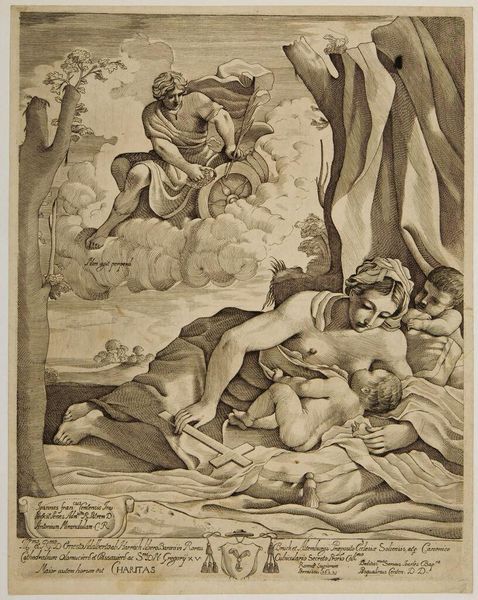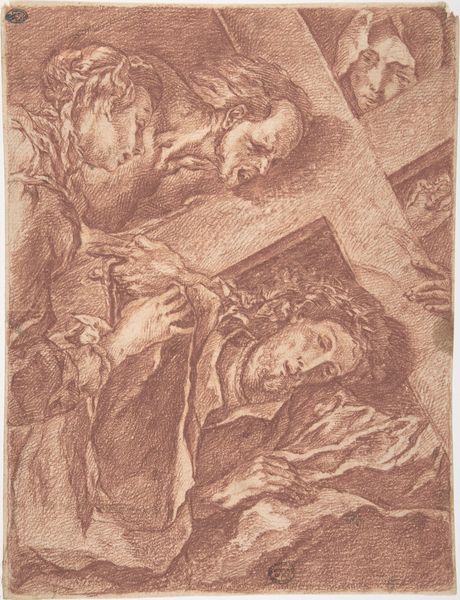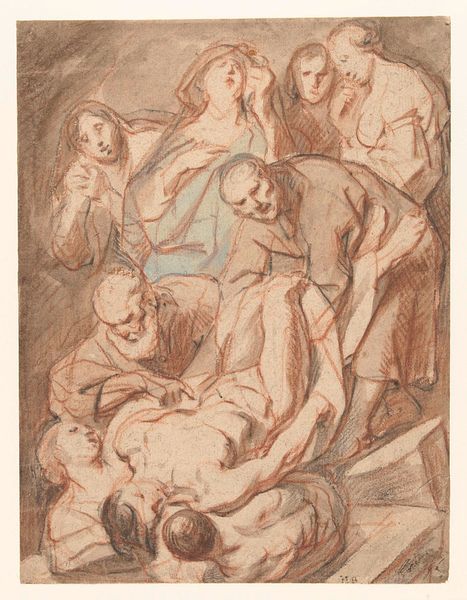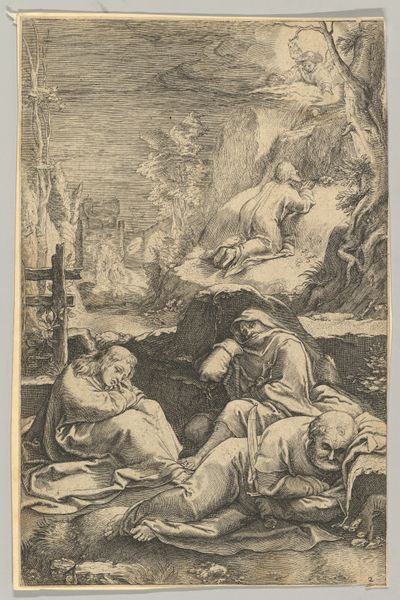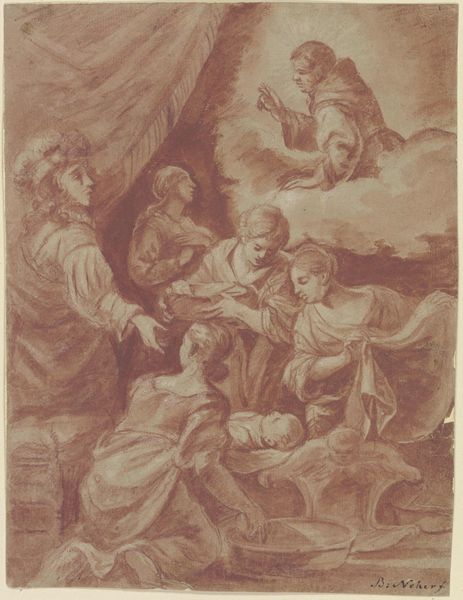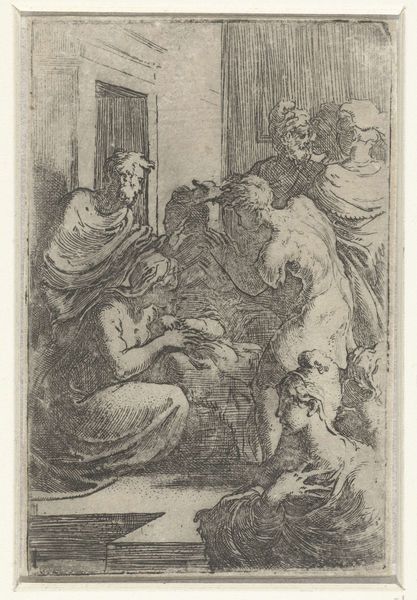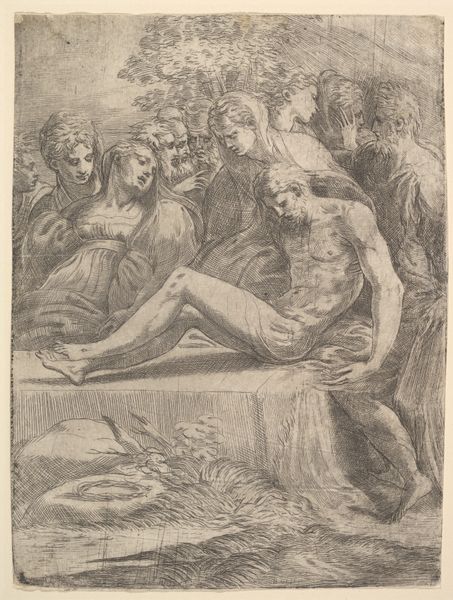
etching
#
narrative-art
#
baroque
#
etching
#
figuration
#
history-painting
Dimensions: height 266 mm, width 197 mm
Copyright: Rijks Museum: Open Domain
Cornelis Schut created this print of Judith and Holofernes sometime before 1655, working with metal and acid. Look closely, and you'll see how the image is made of thousands of tiny lines. These were incised into a copper plate, which was then submerged in acid, 'biting' the lines into the surface. The plate would have been inked, and then pressed onto paper, transferring the image. This was a labor-intensive process, requiring skill and precision, and it allowed for the mass production of images. Consider the story that Schut is telling here - a woman, Judith, using her cunning to behead a sleeping general and liberate her people. The story exists because of the reproductive power of printmaking. Schut, in essence, was one of the earliest exponents of accessible art. Through prints like this, images and ideas could circulate widely, influencing popular culture and shaping social and political discourse. It’s a reminder that the materials and making of art are never neutral; they’re always entangled with wider social and political issues.
Comments
No comments
Be the first to comment and join the conversation on the ultimate creative platform.
